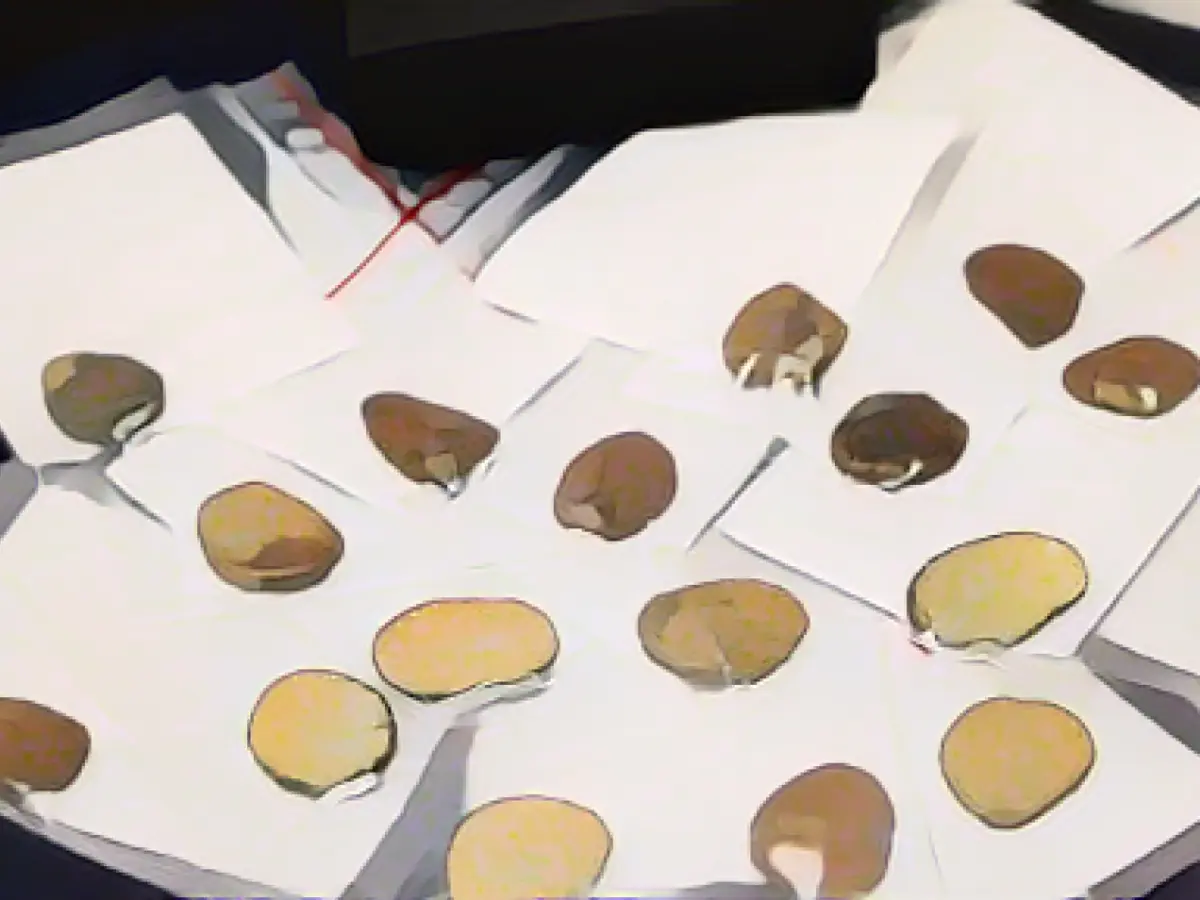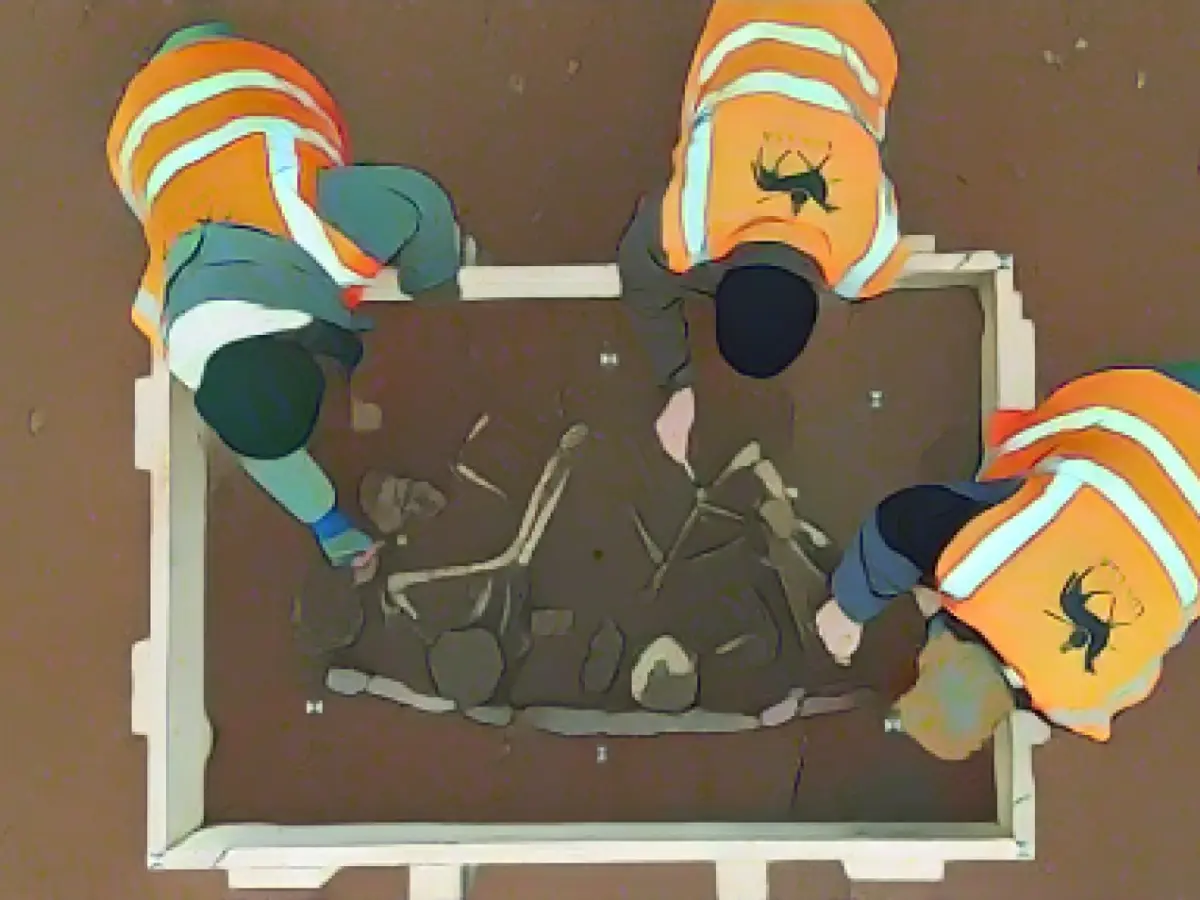Unearthed Treasure: Medieval Cursed Talisman Unveiled in Rostock
Exciting news from the construction site of Rostock Town Hall's extension! Archaeologists have stumbled upon an extraordinary artifact dating back to the Middle Ages - a mystifying, cursed talisman. This ancient relic, shaped as a rolled-up piece of lead, holds the writings "sathanas taleke belzebuk hinrik berith," revealing a chilling tale of an individual named Taleke and another person, Hinrik (or Heinrich), entangled in a sinister plot involving devils Satan, Beelzebub, and Berith.
Jörg Ansorge, the excavation manager, described their discovery as "spectacular" and explained that while curse tablets are commonly known from ancient Greece and Rome during the period of 800 BC to 600 AD, the Rostock find is the first of its kind from the 15th century, making it a truly unique and rare find.
This enigmatic talisman was discovered at the bottom of a latrine near the boundary of the construction site. Ancient traditions dictated that curse tablets were despatched to the depths of urinals or other inconspicuous spots in hopes of ensuring their invisibility and effectiveness.
Two new structures will soon join the Rostock Town Hall complex on Neuer Markt, and care must be taken during the construction process to safeguard these precious ancient relics hidden beneath the earth.
More on Medieval Curses and Jinxed Objects:
- The existence of the Rostock curse talisman adds to the longstanding tradition of ancient and medieval societies employing curses to inflict harm upon individuals or groups.
- To comprehend the historical significance and context of the talisman more thoroughly, closer collaboration with local archaeologists and historians in Mecklenburg-Vorpommern would be essential in digging up further details on Taleke, Hinrik, and the prominence of devils in the 15th-century society.
Sources:
Enrichment Insights:
- Medieval curse tablets held a popular place among ancient and medieval traditions. They usually featured written curses targeting individuals or groups, including specific details of the intended harm. Curse tablets were prevalent in Roman and Celtic societies between 800 BC and 600 AD.
- The Rostock town hall curse talisman marks the first known discovery of a cursed object from the 15th century in Mecklenburg-Vorpommern. This remarkable find expands our historical understanding of medieval practices.
- Portrayals of devils and supernatural entities occupied a significant role in medieval society. People believed that these entities could be summoned to serve malevolent purposes, including exercising revenge or causing harm to others. This ideology strongly influenced religious and secular practices during the medieval era, which often led to the creation of various magical and supernatural artifacts, such as curse tablets.
[1] [2] [3] [4]








